Summer is a time for picnics, going to the beach, and running away from anything yellow and black-striped with wings. It’s human instinct to be scared of stinging insects, but not all of them are worth the screaming and the flailing. Since it isn’t always easy to tell these species apart, I’ve put together a guide of the most common bees, wasps, and hornets we see during Illinois summers. You shouldn’t have to work for a pest control company to be educated about stinging insects. I’ll go in order from cute and fuzzy to RUN AWAY!
Bees
 Bumble Bees
Bumble Bees
Most often seen around flowering plants, bumble bees are probably the easiest stinging insect to identify. They have a girthy, round torso with thick hind legs (called pollen baskets) and an abundance of fuzz that helps them collect the pollen that they use to make honey. Unlike honey bees, however, bumble bees make very little honey; only enough to last them a few days at a time. Their nests are also much smaller and look kind of like a disheveled hodgepodge of grass, leaves, and yellow bubbles. Of the stinging insects, bumble bees are the least likely to sting you, and they’re hugely beneficial to the environment. Plus, they’re cute. You can thank bumble bees for pollenating all the pretty flowers and vegetables in your garden.
Honey Bees
Honey bees are our very favorite stinging insect at ABC Wildlife.
They’re great for local flora, and they’re generally very docile. Honey bees are built somewhat similarly to bumble bees, only slightly slimmer and smaller. 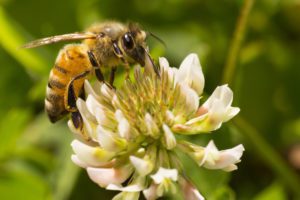
honey bees, our plant population wouldn’t be nearly as thriving
or diverse. Also, we wouldn’t have honey, which means we
wouldn’t’ have baklava. No one wants a world without baklava.
Carpenter Bees
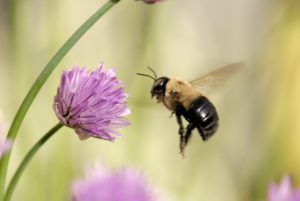
Wasps
To tell the difference between a bee and a wasp, all you have to do is look at the torso and the legs. Wasps have a very defined waist (hence the fashion term “wasp-waist”) and spindly, yellow or brown legs.
Paper Wasps
Just like most stinging insects, paper wasps are striped in black, yellow, and brown. They have the telltale narrow waist and thin legs of a wasp, but when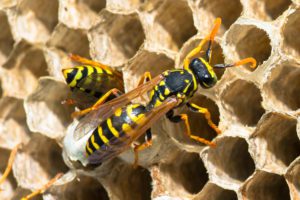
as aggressive as some stinging insects, but it’s still best to stay
away from them.
Yellow Jackets
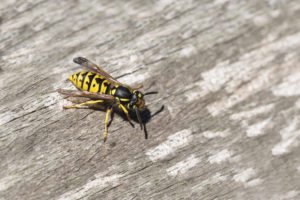
Bald-Faced Hornets
These guys are the scariest of the stinging insects common to Illinois. Even though they’re called bald-faced hornets, they are actually wasps. Instead of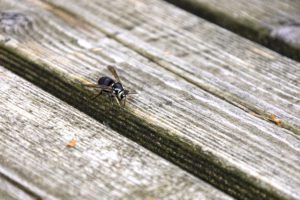
have the ability to sting over and over, so get away as quickly as
possible and call a professional pest control company. I cannot
emphasize enough how important it is that you do not attempt
to remove the nest yourself.
I hope this gives you a better understanding of which stinging insects to worry about, which are relatively harmless, and how to tell the difference. However, even the mildest of bees and wasps can pose a danger, which is why I strongly caution against trying to remove any stinging insects nest yourself.
Who Can I Call About Stinging Insects?
Any pest control company worth its salt will have experienced technicians who specialize in bee, wasp, and hornet removal. But at ABC, our technicians undergo extensive training to prepare them for this kind of work. They’re educated in proper removal techniques depending on species, location of nest, and even the time of day they’re treating the nest. We also have a certified team of honey bee removal experts who specialize in safely and humanely relocating honey bee colonies. And one of the things I love most about our company is that we also repair damage caused by stinging insect nests. For example, if honey bees or yellow jackets have built their hive between the walls in your home, ABC can extract the colony, remove the nesting material, sanitize the area, and restore the walls. If I may toot my own ABC Wildlife horn, I think that’s pretty awesome. If would like even more information about bees, wasps, and hornets, please give us a call at (847) 870-7175. Our representatives are full of great information, and they’re happy to answer any questions you may have.
Sharing is caring! If you’ve learned something from what you’ve read, please click one of the icons below to share this post on social media.
Karen Jesse is a wildlife writer and educator licensed by the Illinois Department of Natural Resources and the Illinois Department of Public Health in urban wildlife management and structural pest control. She enjoys hiking, telling people how cool skunks are, and opera.

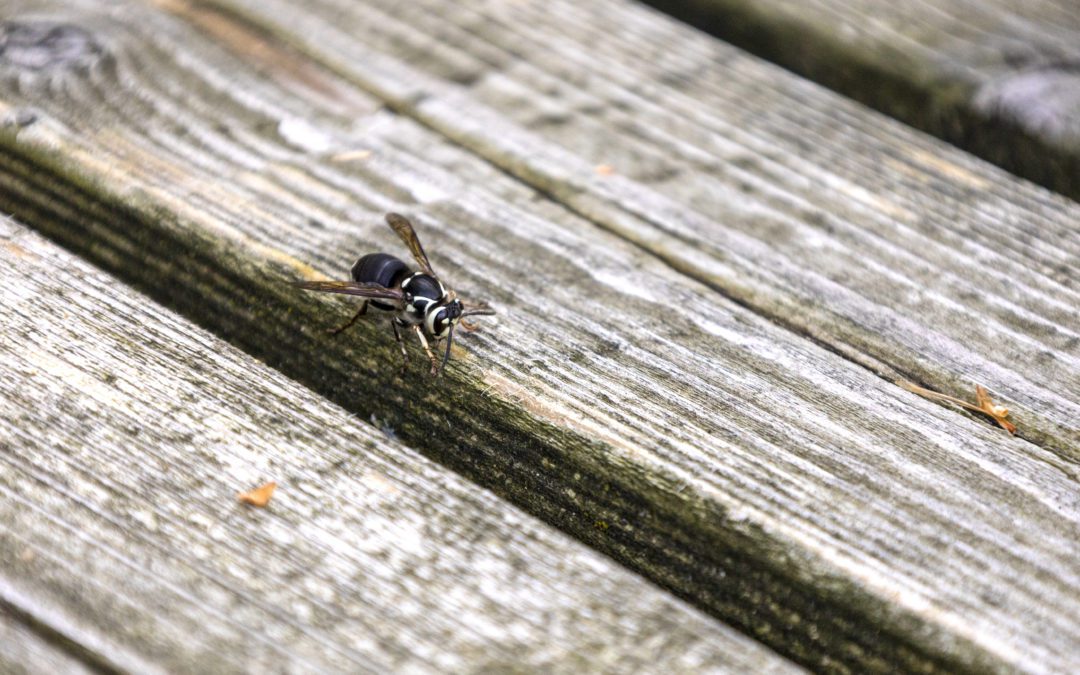
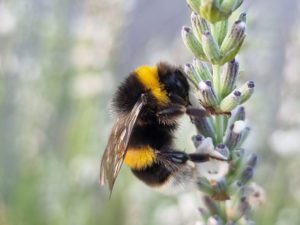 Bumble Bees
Bumble Bees 
